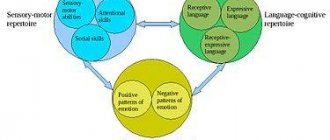We offer consultations via Skype or WhatsApp.
Paranoia is a mental disorder in which one specific idea completely takes over a person's consciousness and prevents him from thinking about anything else. Thoughts of jealousy, persecution, poisoning are observed; such a person may begin to complain about everyone or sue.
A psychiatrist is involved in the treatment and diagnosis of paranoia.
Men often have pathological ideas of jealousy. Such a husband or partner can endlessly accuse his partner of cheating, find evidence in everything, and see a “lover” in every man he knows and doesn’t know. Women have ideas of persecution, they are convinced that someone wants to harm them. The person’s condition gradually deteriorates, he becomes obsessed and can no longer work, study, or take care of himself. Learn more about the symptoms and diagnosis of paranoia.
Is paranoia treatable? With adequate treatment, a competent specialist is able to achieve stable and long-term remission for the patient. The question “can paranoia be cured” has now been resolved; the main thing is not to hesitate to seek qualified help and find a competent, experienced psychiatrist.
Important
A large number of psychiatrists and psychotherapists practice in Moscow. Choose a specialist based on work experience, education, and professional interests. A big plus is having an academic degree - Doctor of Medical Sciences, Professor. But the most important thing is customer reviews.
A private psychiatrist will tell you how to remove paranoia. In the treatment of this condition, drug correction is used; in mild cases, psychotherapy can be used.
Causes of paranoia
The etiology of the disease has not yet been fully elucidated. Unlike schizophrenia and some other mental illnesses, the connection between paranoia and genetic characteristics has not been confirmed. Experts suggest that the development of pathology may be due to:
- injuries, tumors, brain surgeries affecting the limbic system and basal ganglia;
- the influence of stressful life situations and circumstances;
- specific, hostile relationships in the family;
- social isolation, lack of communication, etc.
It is believed that the development of paranoia is predisposed by severe stress, accompanied by cruel (both morally and physically) attitude of others, strong envy, anger, which is why a person is left alone. He withdraws into himself, trying to find the reasons for what happened. Gradually, anxiety and restlessness develop, and a feeling of complete hopelessness appears. In such a situation, the formation of delusional, paranoid ideas is one of the mechanisms of subconscious psychological defense.
Risk factors
There is a theory that one of the factors that can contribute to the development of persecutory delusions is an innate feature of the human nervous system. It manifests itself in increased sensitivity, emotionality, and a tendency to exaggerate.
Particularly susceptible to the development of the disorder are people who in childhood experienced hypercontrol in their upbringing or ignorance from loved ones, which further contributes to the development of a victim complex and delusions of persecution. Failure in the nervous system can also occur under the influence of traumatic situations.
COST OF TREATMENT FOR MENTAL DISEASES
The duration of treatment in a hospital is from 14 to 90 days, depending on the severity of the disease.
TREATMENT IN A HOSPITAL.
AMBULATORY TREATMENT
TREATMENT IN A HOSPITAL
Inpatient treatment – accommodation options
| Accommodation in a triple room | 10,000 rub./day |
| Double room | RUB 13,800/day |
| Single room of increased comfort | 16,000 rub./day |
| Treatment in a single VIP ward | 25,000 rub./day |
AMBULATORY TREATMENT
Ambulatory treatment
| psychiatrist | FOR FREE |
| Consultation with a psychiatrist (first appointment) – free of charge during hospitalization | 3,000 rub. |
| Full psychodiagnostics (all tests and procedures) | from 5,000 rub. |
| Appointment with the head physician of the clinic | 4,500 rub. |
| Consultation with a psychiatrist at home | from 4,000 rub. |
FREE CONSULTATION
Diagnostic measures
Identifying paranoia and establishing the causes of its development is a difficult diagnostic task. Sick people are reluctant to go to medical institutions and often spread their delusional ideas to the attending physician and medical staff. The most suitable specialist to work with this group of patients is a psychotherapist.
The doctor’s primary task is to identify paranoid ideas and systematized delusions that disrupt a person’s socialization. For this purpose, conversations are held with the patient and his relatives, who can indicate how long ago paranoia developed and its main manifestations. It is important to note that in many cases, the patient may not share his thoughts with people around him.
Of great importance for determining the causes of the development of the disease is the study of the characteristics of childhood and adolescence. Patients often themselves focus on the events when paranoid ideas first appeared, however, their precursors are hidden. Psychological tendencies towards systematic delusions can be identified when talking with parents.
When excluding psychological factors, doctors use laboratory and instrumental examination methods:
- Clinical and biochemical blood tests to assess general health and identify metabolic disorders.
- If atherosclerosis of the cerebral vessels is suspected, an ultrasound examination is performed in combination with Doppler sonography.
- Neuroimaging is the “gold standard” in diagnosing brain diseases, recommended for all patients with symptoms of brain damage. The greatest information content is observed when performing magnetic resonance imaging.
Only the attending physician should interpret the results obtained. It is important to note that paranoia is diagnosed in cases where a person does not have signs of other mental pathologies, such as schizophrenia. Otherwise, the diagnosis is not made, since systematized delirium is not an independent disease, but only a symptom.
Paranoia: its signs
During the course of the disease, it is difficult to identify any clear stages. Sometimes the manifestation of the disease may be preceded by a prodromal period, which is characterized by mood changes. The patient is less and less likely to be in a complacent mood. Suspiciousness, gloominess, self-absorption, pickiness are typical. A person can avoid communication, provoke scandals and conflicts.
With paranoia, symptoms usually appear when what is happening is somehow related to formed delusional ideas. Otherwise, the patient does not give the impression of a mentally unhealthy person, especially during the period of remission. He takes care of his appearance, is neat, is able to maintain a logically coherent conversation, and in some cases his ability to work is preserved.
Etiology
The development of paranoid disorder is based on personality traits and negative environmental influences. It is known that patients with symptoms of the disease suffer serious psychological traumatic events in childhood, which changes their thinking pattern towards negative judgments. In such a case, adolescents develop high self-esteem, belligerence towards other people, and a tendency to incorrectly interpret life events.
According to modern psychological theories, people begin to transfer their anxiety and aggressiveness to the people around them, forming symptoms of paranoia in themselves. Such conditions form a vicious circle - a situation where the incorrect interpretation of facts only confirms the conclusions, which leads to a constant deterioration of the entire situation.
In addition to the characteristics of upbringing and the environment in childhood, organic brain lesions are of great importance. It is known that when signs of paranoia appear in adulthood and old age, Parkinson’s disease, Alzheimer’s disease, atherosclerotic brain lesions, chronic alcohol abuse, etc. may play an important role in their occurrence.
Establishing the immediate cause of paranoia is not always possible. In its occurrence, a combination of factors is often observed: psychological predisposition, negative social conditions in childhood, as well as organic or mental diseases of the brain.
Clinical signs of the main types of paranoia
The disease worsens (symptoms are variable and differ depending on the specific form of paranoid syndrome) sharply, under the influence of any external factors.
Erotomanic
The patient is sure that someone has serious feelings for him. As a rule, the “object” of desire is a person standing noticeably higher on the social ladder (for example, a boss, an oligarch, a politician) or a well-known media personality (an actor, a musician). Delusional ideas can be of a purely romantic, spiritual nature, or even have overt sexual content.
Depending on the personality characteristics, the patient may keep such a “feeling” secret or make a lot of efforts to meet his “lover”. In the event of a categorical refusal, he easily “switches” to a new object.
Delusions of grandeur
People suffering from this form of paranoia are convinced that they have some kind of talent. These could be creative, paranormal abilities. Sometimes they are sure that they have a special relationship with very real personalities (the president, the head of the intelligence services) or an imaginary deity. The patient may declare himself the messiah, etc.
Marital paranoia
Accompanied by obsessive thoughts about the infidelity of a spouse or cohabitant. A person constantly tries to find confirmation of his suspicions, sees evidence of betrayal in any words and actions, and “appoints” someone to the role of “lover.” He can arrange a search, harass those around him with his thoughts, and strive with all his might to obtain a confession of infidelity. As a rule, such a situation ends in divorce, after which temporary relief occurs, but soon the delirium appears again. It can be directed either at a former spouse, or relate to a new relationship.
Paranoid persecution syndrome
It is characterized by obsessive thoughts that someone is actively interfering with the achievement of goals, trying to cause moral or material harm, or deceiving. Behavior is dominated by excessive suspicion, sometimes by overt aggression and anger directed at the “persecutors.”
Hypochondriacal
Confidence in one's own serious incurable illness is typical. The patient constantly looks for symptoms of pathology, goes to doctors, gets tested, listens to his own feelings and reacts sharply to the slightest changes in well-being. Often, hypochondriacal paranoia, the symptoms and signs of which are associated with an imaginary disease, is superimposed on psychosomatic disorders, which further aggravates the course of the disease.
Other forms of mental disorder
- the idea of wealth;
- obsession;
- intellectual delirium, in which the patient believes that only he is capable of understanding the laws of the universe or some particular branch of science, often puts forward contradictory thoughts about the creation and structure of the world.
Classification of persecution mania
By origin, delusions of persecution can be primary and secondary. The primary option is called interpretive; it is based on a disorder of thinking. The secondary – figurative and sensory – is formed on the basis of hallucinations. According to the content (plot), there are many types of persecutory delusions:
- Delirium of damage. The patient is convinced that they are trying to steal or damage his property.
- Delirium of poisoning. Confidence that pursuers add poison to food and water.
- Delusional relationship. Objects, people and events take on special meaning.
- Delirium of influence. The idea of using physical or mental influence to control behavior.
- Nonsense of queralism. Thoughts about intentional infringement of rights. A craving for complaints, litigation, and the fight for justice.
- Delirium of jealousy. Ideas about cheating, betrayal of a partner.
- Nonsense of staging. All events that occur are perceived and interpreted by the patient as part of a performance, an experiment on him.
- Delirium of obsession. The patient believes that another creature has possessed him and is controlling him.
- Delirium of a double. With the positive option, strangers are perceived as friends and relatives. If negative, close people are strangers with good makeup.
- Delirium of metamorphosis. The idea of magical transformation into an animate being or object.
- Bullshit of accusations. It seems to the patient that people are constantly accusing him, out loud or mentally, of crimes, troubles, and tragedies.
Paranoia: what to do, principles of treatment
Hospitalization is indicated in the acute period, when the patient is completely inadequate and can attack both relatives or acquaintances and completely strangers. In some cases, at the peak of delusional thoughts, the patient may try to commit suicide.
Treatment of paranoia in a hospital provides not only constant monitoring of the patient’s condition and intentions. When the syndrome worsens, it is very important to establish contact with a doctor, and often in such a situation the patient quite logically “integrates” taking medications into the structure and content of the delusional disorder.
For treatment, drugs from the group of antipsychotics are usually prescribed, and after remission is achieved, maintenance therapy with antidepressants, lithium-based drugs, and sedatives is possible.
Paranoia: how to get rid of the disease using non-drug methods
In addition to mandatory medication, psychotherapy is indicated. Group classes are ineffective and can lead to the opposite result - refusal of treatment. Therefore, at the Cordia Clinic we offer individual consultations. In a personal conversation, the doctor can determine how to treat paranoia and how appropriate it is to use potent drugs.
Physiotherapy is useful in helping to normalize sleep, reduce psychomotor agitation, and eliminate hyperreactivity of the nervous system. Sports activities have an excellent effect.
But doctors categorically warn against treating paranoia at home. Complications and worsening of the disorder can only be avoided with inpatient or outpatient therapy under the supervision of an experienced specialist. And the appearance of the first symptoms of the disease requires mandatory consultation with a doctor.
We do not give a 100% guarantee that we will be able to completely cure paranoia: some forms of the disease simply cannot be treated. But our doctors will select the appropriate medications and the right tactics of psychotherapy, which will allow you to achieve stable remission in the shortest possible time, when only maintenance treatment is required. Call us at +7 (495) 367-23-13 and sign up for a consultation!
Use of psychological methods
The use of psychological methods can completely help get rid of phobias and anxiety disorders accompanied by fear of persecution, and significantly reduce the severity of symptoms in the case of delirium. The main psychological method for treating persecutory delusions is cognitive behavioral therapy. Delusion of persecution is a destructive mental state in which a person is pathologically convinced that he is being watched and they want to harm him.
Types of paranoid disorder
The main feature of paranoia is the presence of some kind of delusional, obsessive idea. A paranoid person becomes fixated on completely different, sometimes even unexpected, things. In this regard, doctors divide the disease into several types:
- Persecutory (fear of persecution). The condition is accompanied by delirium.
- Paranoia of lust (against the background of love relationships). The disease manifests itself as delusions of an erotic/love nature.
- Alcoholic (pathology develops against the background of alcoholism). This condition is characterized by manifestations of extreme jealousy and persecution.
- Hypochondriacal (fear of illness). The paranoid person is convinced that he has an incurable disease. This type of disorder is accompanied by hallucinations and delusions.
- Paranoia of conscience. The disease manifests itself in an overly strict attitude towards one’s own personality. The patient blames himself for all sins and suffers even for the slightest mistaken offense.
- Involutionary. More often, this type of paranoia develops in women on the eve of menopause. The disorder develops in an acute form, accompanied by delusions and hallucinations.
- Expansive (creativity). The individual imagines himself to be a super-great artist, poet, thinker, musician. Without receiving recognition, the patient displays an aggressive, embittered form of behavior.
- Sensitive. Sensitive paranoia occurs due to physical damage to the brain. The disease manifests itself as a paranoid person’s desire to create a conflict and quarrel. A quarrel is accompanied by a noisy showdown that leads to a fight.
Symptoms
With paranoia, delusions develop without hallucinations. The exact reasons for its occurrence are unknown. The impetus for the formation of delusional ideas can be trauma, including psychological trauma. A tendency to such psychosis can manifest itself in early childhood. Children with this feature are very straightforward, they develop one-sided interests, a clear desire to take a leadership position and indifference to other people's opinions.
Paranoid people don't tend to make compromises. They also do not like to forgive, so it is quite difficult to come to an agreement and reconcile with them. In general, such people show a disdainful and suspicious attitude towards others. With age, such signs become more and more common. This prevents a person from establishing contact with society, working normally in a team and building family relationships.
The main symptom of paranoia is delusion. The patient has a certain idea, which he logically substantiates and constantly finds confirmation for it. It is not easy to correct it from the outside, for example, during therapy, since for every argument a paranoid person has several counterarguments, which, in general, may seem consistent. The content of the delusion determines the type of paranoia. There are quite a lot of them, so we will list the most common ones.
Differences
One of the important differences between paranoia and schizophrenia, regardless of the form of the latter, is the symptoms. The first is characterized by delusional ideas, usually on one topic, which deepen and become more complex over time. In schizophrenic disorders, in addition to delirium, which may not exist at all, as in the sluggish variety, dozens of other signs are observed.
Moreover, delusions in schizophrenia can be very diverse and only in the paranoid form does it become monothematic, which makes it similar to paranoia. But even in this case, we see many other symptoms, both positive and negative.
The paranoia of a jealous person is described in detail in Buñuel's film HE. Psychoanalyst Jacques Lacan showed it to students in his psychiatry courses.
But there is another difference that can be considered key. With paranoia, personality disintegration does not occur. A paranoid person, if we exclude his delusional ideas, is not much different from other people. He can think, act and reason logically and consistently. He begins to rave only when moving to a specific topic that evokes an emotional response in him.
A typical example of a paranoid person in literature is Don Quixote. Cervantes describes him as a wise and judicious man. In many ways, he is superior to others in intellectual and moral parameters. However, as soon as we start talking about chivalry, Don Quixote instantly turns into a madman who believes in wizards and giants and throws himself at the mills with a spear.
Let us formulate the main points by which paranoia differs from schizophrenia:
- Number of ideas. For paranoia - one, and for schizophrenia - many (except for paranoid syndrome).
- Attitude towards opponents. A paranoid person is extremely intolerant, and a schizophrenic person can pretend that he agreed with someone else's opinion.
- Interest in people. The paranoid person is suspicious of everyone and often watches others. With schizophrenia, the patient, as a rule, does not notice anyone except himself.
- Accuracy. With paranoia, a person can be neat and pedantic. A schizophrenic is absolutely irresponsible. He neglects his affairs, his appearance, hygiene, etc.
- Progression. Paranoia progresses according to the type of deepening of the delusional idea. In general, a person retains his personality. Schizophrenia develops until it completely disintegrates.
At the same time, it cannot be denied that the mechanism of delusion formation in paranoia and schizophrenia may be similar. However, the first cannot lead or cause the second, since it does not cause a schizophrenic defect that affects personal qualities.











